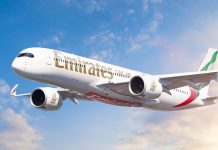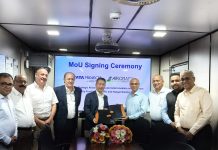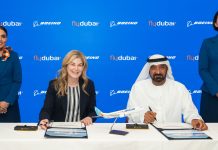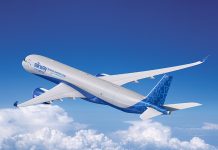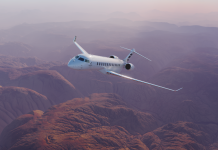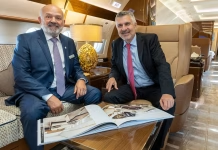 A New Zealand-built aircraft used by the United Nations will tour Australia to participate in a cross-country fundraising initiative supporting the Royal Flying Doctor Service (RFDS). The SuperPac 750XL-II, designed and manufactured by Hamilton-based aviation firm NZAero, will take part in the 2025 Outback Air Race. The event spans more than 3,800 kilometres and raises hundreds of thousands of dollars of critical funds for the RFDS, which provides emergency medical care to patients in remote and rural areas across Australia.
A New Zealand-built aircraft used by the United Nations will tour Australia to participate in a cross-country fundraising initiative supporting the Royal Flying Doctor Service (RFDS). The SuperPac 750XL-II, designed and manufactured by Hamilton-based aviation firm NZAero, will take part in the 2025 Outback Air Race. The event spans more than 3,800 kilometres and raises hundreds of thousands of dollars of critical funds for the RFDS, which provides emergency medical care to patients in remote and rural areas across Australia.
The SuperPac 750XL-II is the world’s first commercial XSTOL (Extremely Short Take-Off and Landing) aircraft. It is designed to operate in environments with limited aviation infrastructure, requiring minimal runway length and enabling access to remote areas where conventional aircraft may be unable to land or take off. The aircraft can carry up to nine passengers or 2,000 kilograms of cargo, and has already been deployed in 28 countries for purposes including medivac, humanitarian relief, and disaster response. It has also been used by the United Nations World Food Programme and in several Pacific nations for emergency logistics.
NZAero CEO Stephen Burrows says the aircraft’s design and capabilities have been developed in response to increased global demand for highly adaptable aviation platforms in emergency and development settings. “As extreme weather events become more frequent and more severe, the need for aviation solutions that can access remote or damaged locations has never been greater. The SuperPac was developed to fill that gap. It can be rapidly deployed in complex environments and configured to perform a wide range of critical tasks,” he says.
Burrows says the seven-year development programme behind the aircraft has drawn on decades of operational knowledge from agricultural aviation and expanded it to meet the needs of humanitarian and government users. “Our engineers designed this aircraft to do more with less – less runway, less infrastructure, less downtime. It can land where larger aircraft cannot and lift more than its own weight in cargo. That makes it a valuable tool in regions affected by drought, disaster, or isolation.”
The aircraft incorporates a modular system that enables it to be reconfigured quickly for different roles. Applications include aerial firefighting, cloud seeding, freight transport, topdressing, border patrol, surveillance, and scientific research. Burrows says these capabilities allow the aircraft to serve in both civilian and defence capacities, as well as commercial operations.
The aircraft is scheduled to depart from Hamilton on 7 August 2025, with planned stopovers in Norfolk Island and Lord Howe Island before beginning an extensive tour of eastern and central Australia. In addition to participating in the air race itself, the aircraft will travel to more than 40 regional locations across Queensland, New South Wales, the Northern Territory, Western Australia, South Australia, Victoria, Tasmania, the ACT and Sydney. A number of aero clubs, aviation schools and airfields are expected to engage with the aircraft during the visit.
NZAero director and pilot Dee Bond, who will fly the aircraft in the Outback Air Race, says the aircraft was purpose-built for the kinds of missions the RFDS undertakes daily. “This aircraft was designed to operate in places that are underserved or difficult to reach. Whether it’s responding to a medical emergency, a flood or a bushfire, the SuperPac can get people and supplies in and out quickly and safely,” says Bond.
She says the aircraft’s tour presents a valuable opportunity to demonstrate its capabilities in the field. “While the race is a charity event, the tour also gives professionals and the wider public the chance to see what this aircraft is designed to do. The feedback we receive from those already operating the aircraft overseas has been overwhelmingly positive. We hope our Australian counterparts see the value it could offer there to,” she says.






